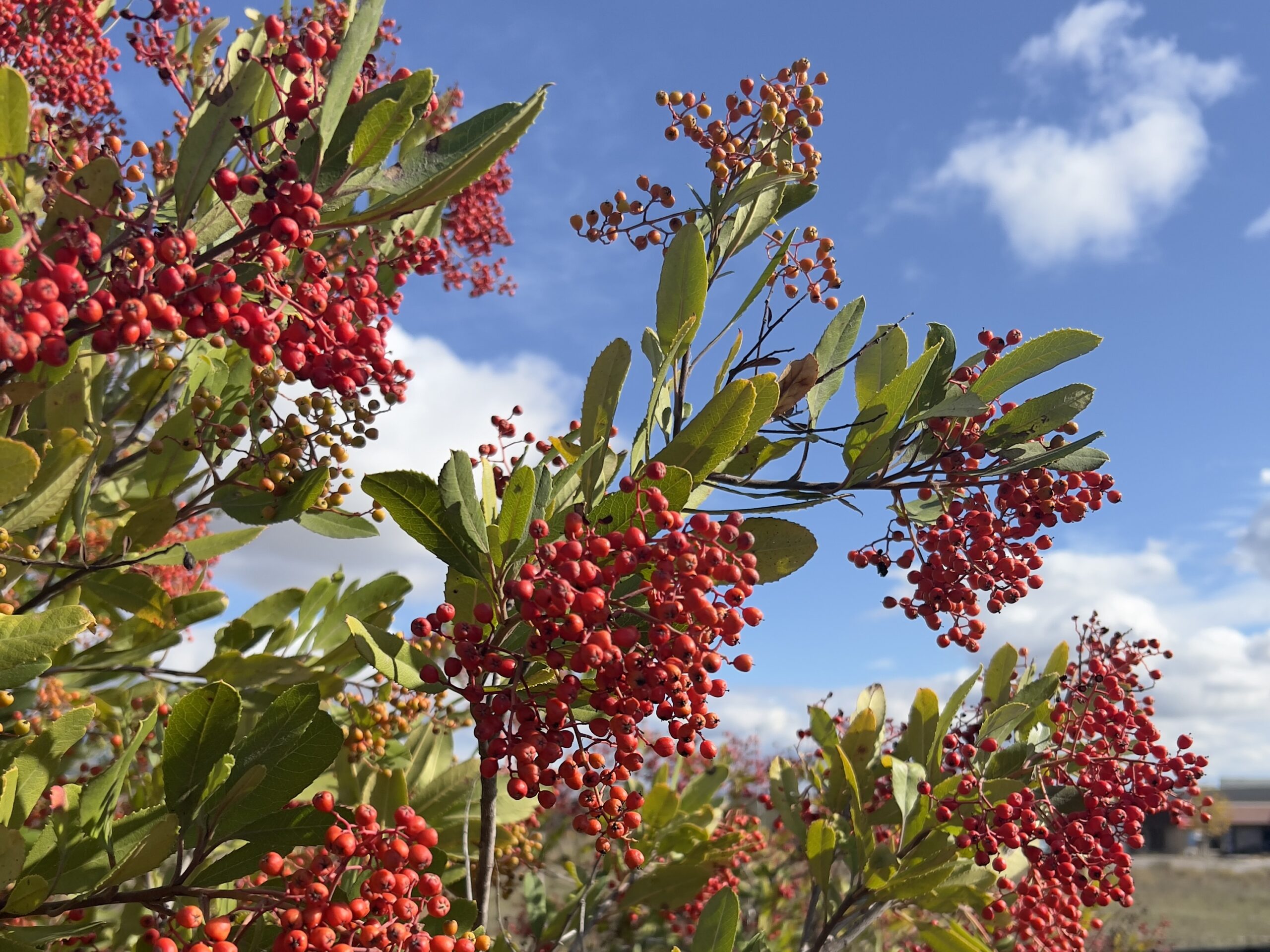
December is a quiet month, at least in the world of nature. The natural garden is a quiet place as well, and a perfect refuge for us in a month when many are running about for social events, shopping, driving to a vacation spot or to an airport, generally making traffic worse, increasing our stress, and possibly planting in us the notion, “Everyone’s rushing so we must all be late, including me.”
Many nature lovers and native plant gardeners become experts in the field of phenology, defined: “the study of cyclic and seasonal natural phenomena, especially in relation to climate and plant and animal life.” The first arrival of robins, when the manzanita bloomed this year, the full redness of tour toyon berries, rainfall, our first freeze, etc. If you’re not already involved in such an activity maybe there’s a nature journal in your future… just put one on your list for Santa.
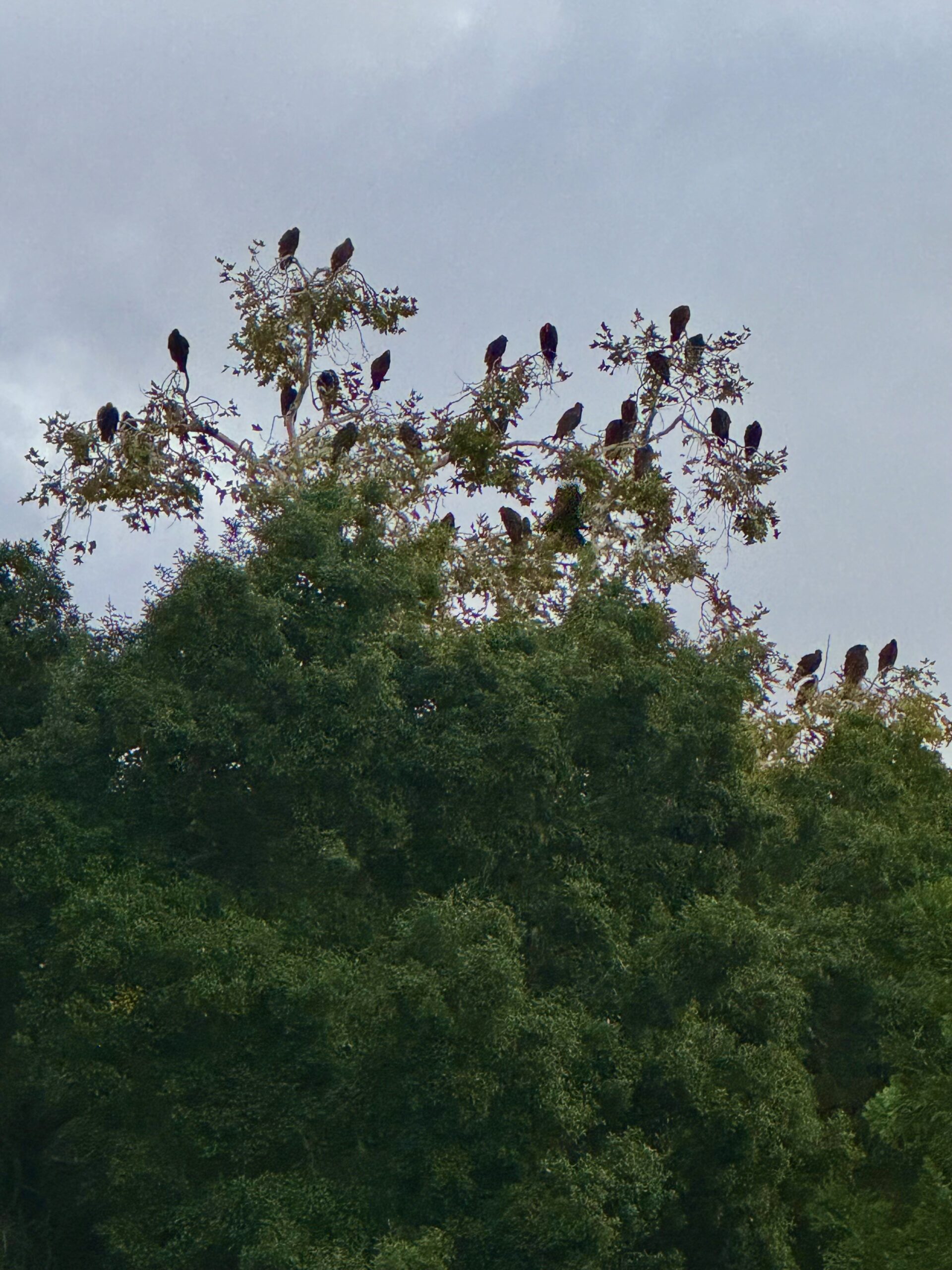
Current events, history, review, and notes
This winter is starting out warm. We haven’t had our first frost at Tree of Life, so cold mornings are apparently arriving late compared to most years. We’ve only seen a couple light rains, but the word on the street is that we could be in for a wet winter.
Watering
Typically, rains should be taking over in the watering department any day now, and keeping our soil moist through April/May and even beyond. One huge advantage for native plants is that they normally get by with zero supplemental irrigation all winter long.
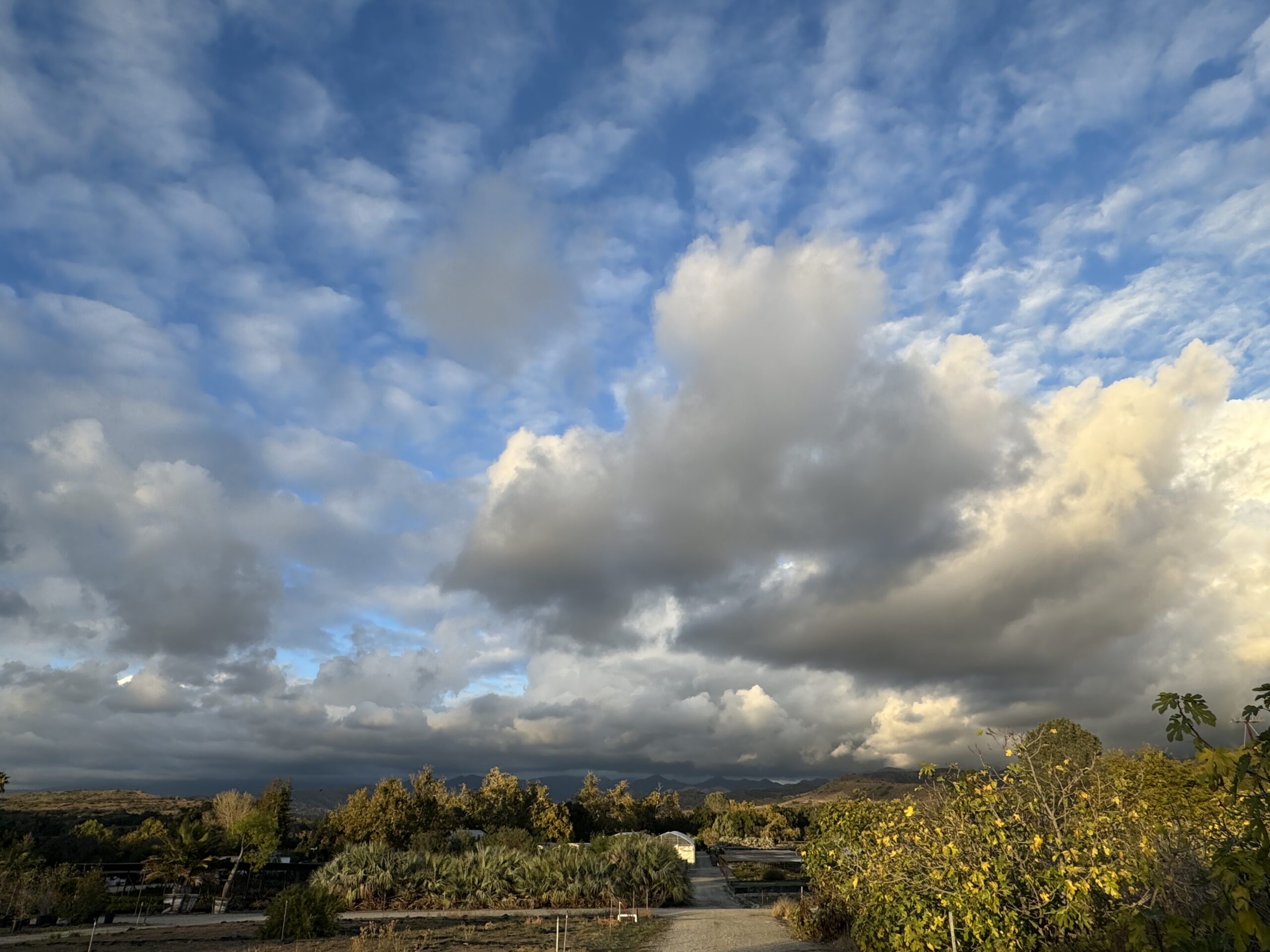
Related to Watering
If your planting is less than one year old, or if you are still adding new plants, don’t neglect the soil comprising the “root zones” in those areas. In winter, we try to keep the soil moisture relatively high, so if we get dry spells between rain events, don’t hesitate to water deeply around new plants.
Pruning
It is safe to do all manner of pruning in winter, but we usually try to do most pruning in November, because though still invisible, spring flowers (latent buds) may be forming on branch tips. If you are pinching or heading back new growth, make sure it is not on a late winter / early spring flowering shrub, (i.e. manzanita, some ceanothus, currants).
You should prune Romneya to the ground this month.
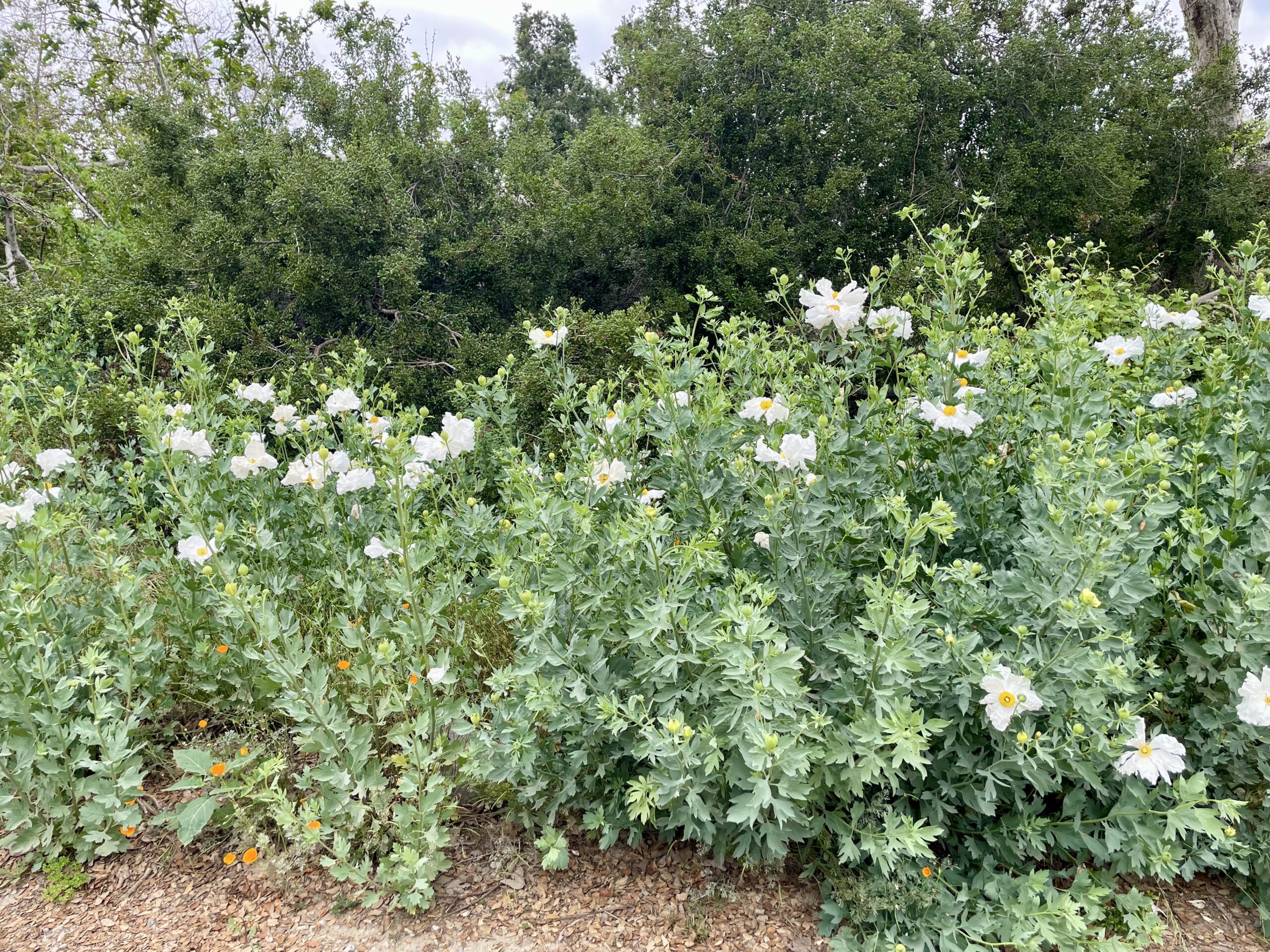
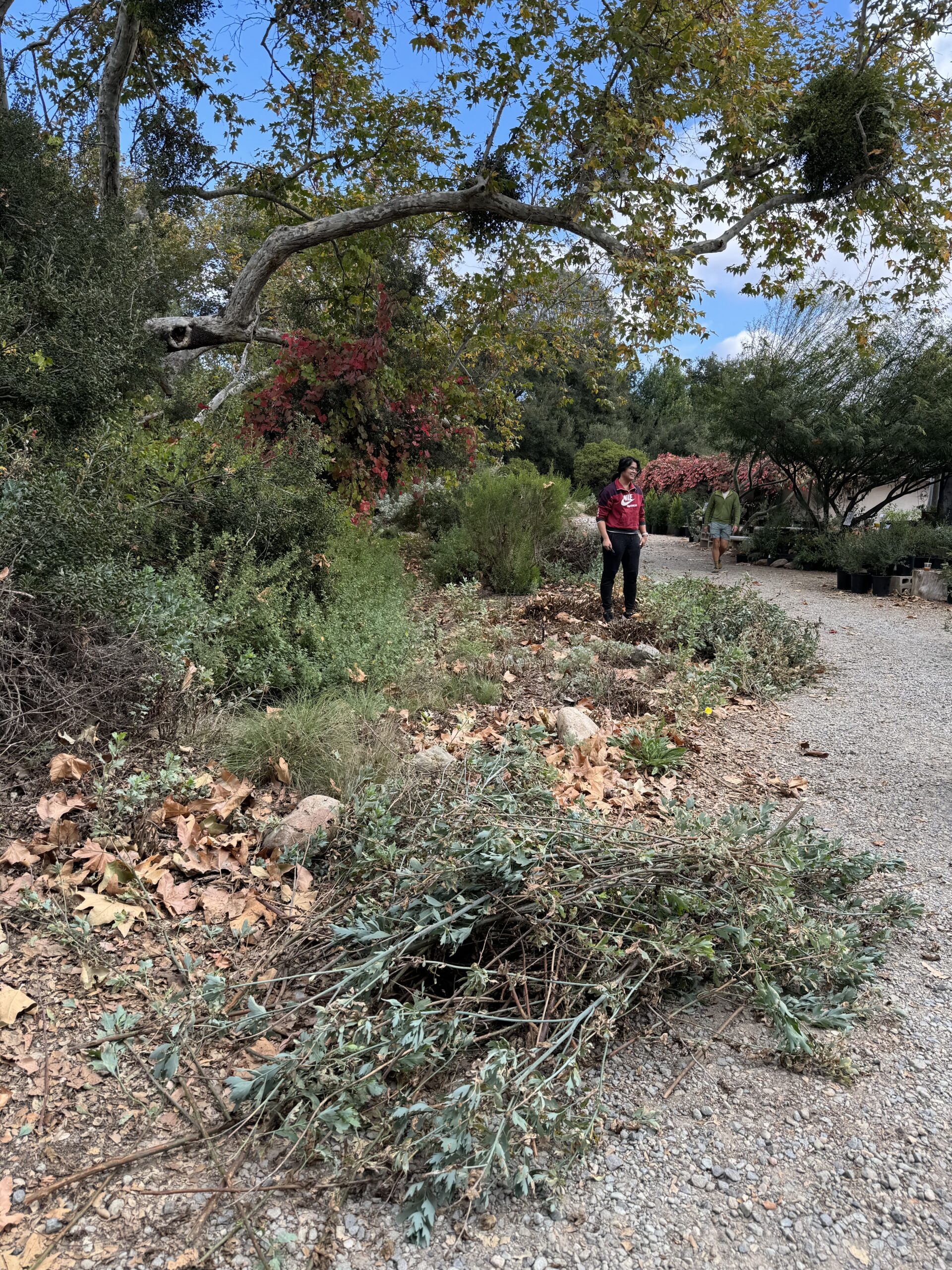
When cutting out diseased wood, always make your cut in a healthy spot on the branch, a place in front of the zone called the “margin of advance.” In addition, keep your tools sanitized by dipping between cuts in a 10% bleach solution (9 parts water, 1 part bleach), alcohol, or by using Lysol spray.
Weeding
Hopefully you sowed wildflower seeds and your current challenge is to determine between the germinating flowers and the seeds. This is always fun.
Mulching / Top Dress
No new imported topdress at this time. Let the fall/winter leaves accumulate gracefully under the plants. Gather and rake them to relocate and place them in the best spots.
Feeding
No feeding is necessary. As a general rule, organic fertilizer is not very active in cold soils, so the best windows for feeding are October and March.
Troubleshooting – Varmints, Pests and Diseases
For the most part, the populations of injurious plant pests are low in winter. Beneficial garden allies are always to be encouraged by your plant diversity and careful attention to Re-wild maintenance protocols.
Annual Wildflowers
It is not too late. Don’t miss your chance to see pretty flowers in spring. Sow seeds now!
Adding New Plants
Fall, winter, and spring are the best times to plant natives. Come on over! We have a full inventory of lovely natives this season.
Phytophilia
What is the garden saying this month? I’m hearing the word “shadows.” We are being called to look deep into the recesses, the nooks, the crannies, and the insides of each plant to appreciate the darkness contrasted by winter’s pure light.
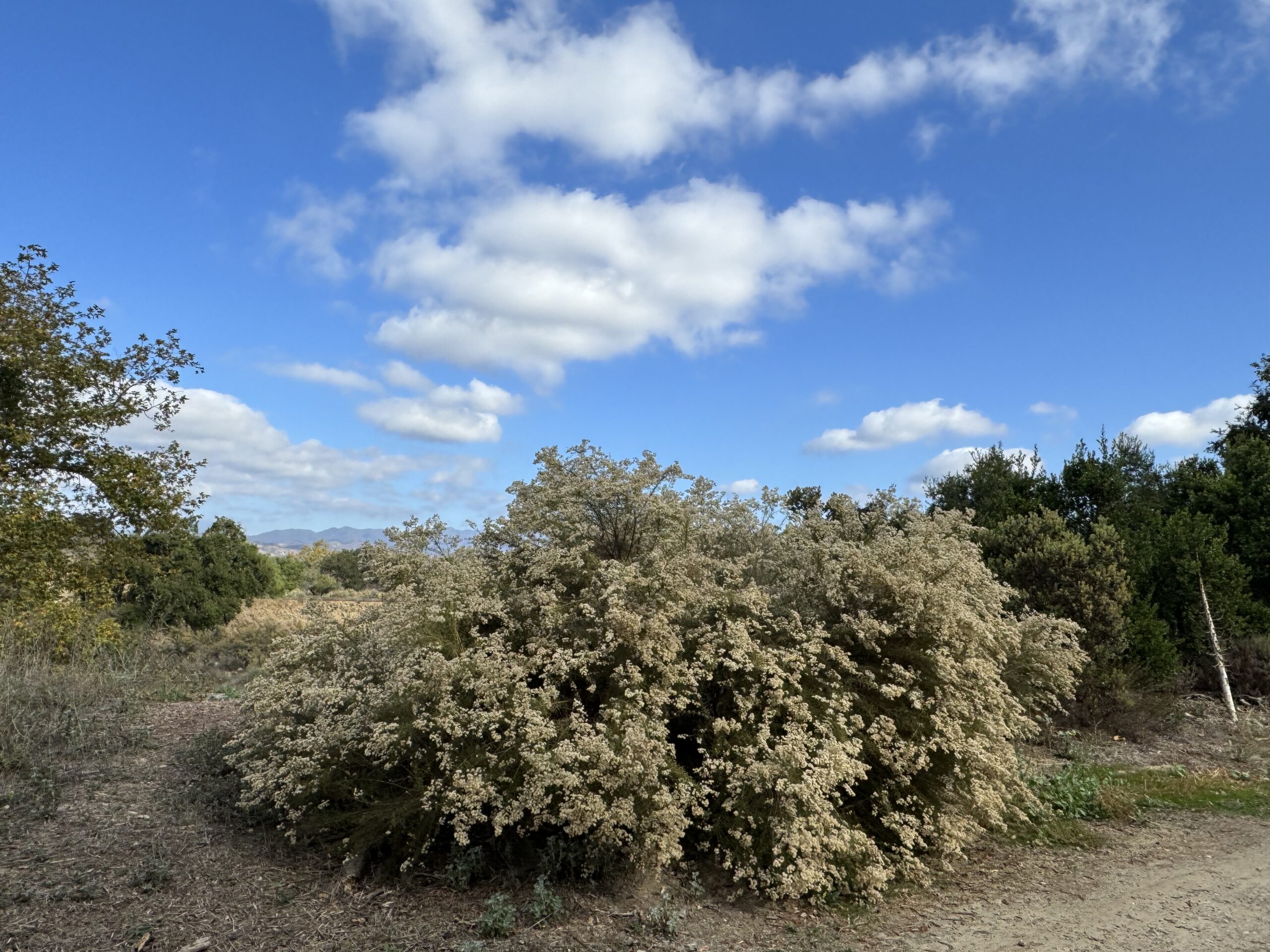
Re-wild
Leave the leaves. Unless winter leaf drop is excessive to the point where it buries the entire understory planting (come see our huge sycamore and the hidden iris in January), it is best the leave the leaves where they fall in the fall, (or winter).
Important Review
Not very much rain so far
Not very cold so far
Water new plants,
Watch the weather forecasts for established gardens
Pruning OK, don’t damage spring blooming branches
Be sure its a weed if you pull it out of a bed germinating flowers
No new topdress, skillful raking to keep leaf litter in the right places.
Hold off on feeding
Keep the beneficials coming
Sow plenty wildflower seed
Plant new plants
Leave the leaves
Beautiful shadows
Engage
Isn’t it wonderful that in both the cold of winter and the heat of summer, we have so few “chores” in the garden. In winter we plant new plants so they can establish before summer. In summer we provide additional water to supplement our cool season rains. But “maintenance” tasks are few at both times, giving us a chance to appreciate the quiet peace of winter and later, the loud buzz of summer.
But let’s take one thing at a time. On one early winter morning, I took a stroll through a large strolling garden we planted last spring, I stopped and listened to….. basically nothing…… my breath?…… my heartbeat? Then I walked a little more and heard…… my footsteps.
It’s the kind of place that when you walk into it, it walks into you, though very quietly. And when you leave, it will stay inside you for a long while.
From all your amigos at Tree of Life we wish you a very Merry Christmas, Happy Holidays, and a Happy New Year. May this festive season be for you and yours, the best ever!
Hey, 2023 is closing down. We made it! Let’s keep makin’ it!
From the DECEMBER in the Natural Garden,
Mike Evans
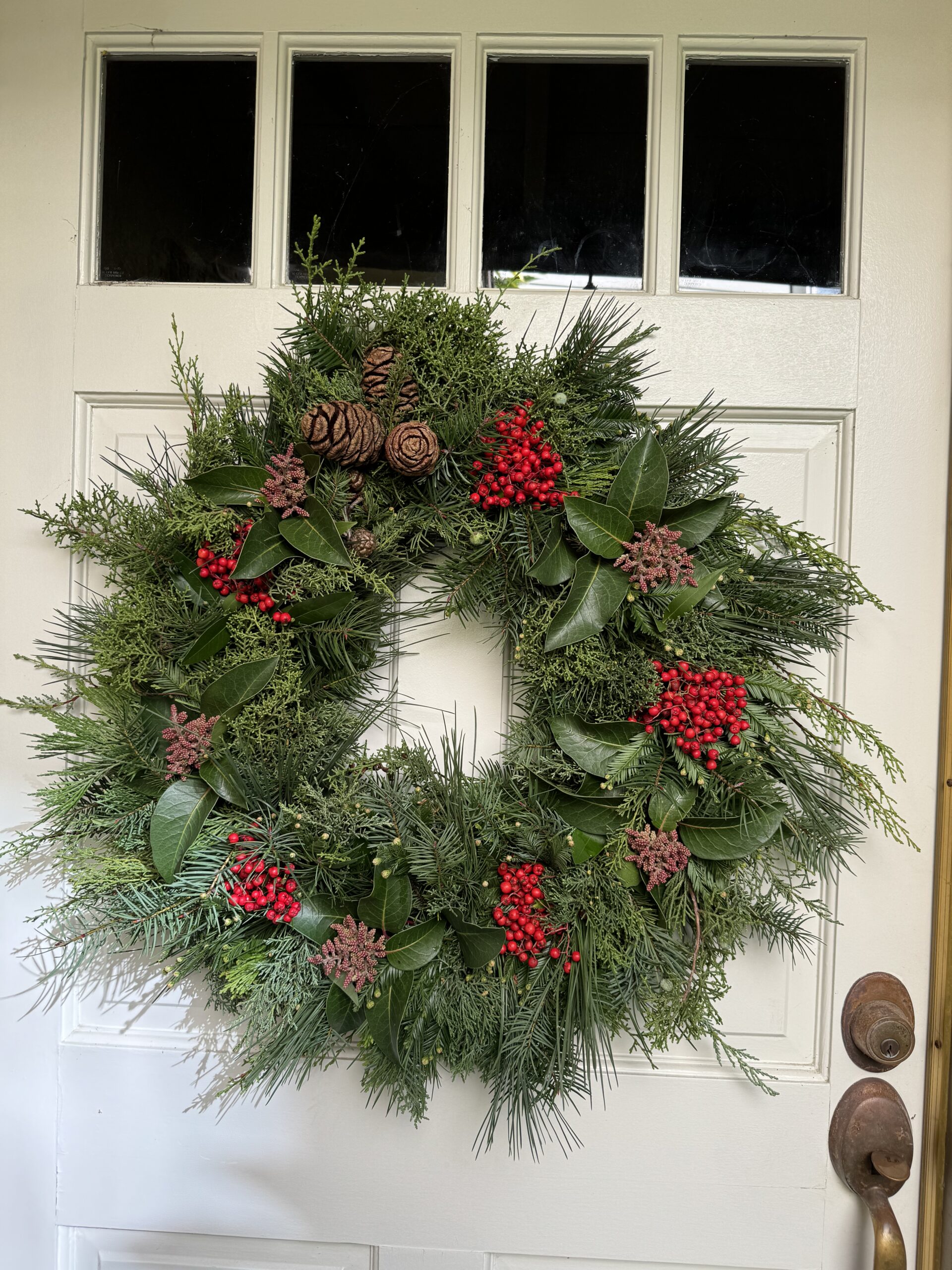
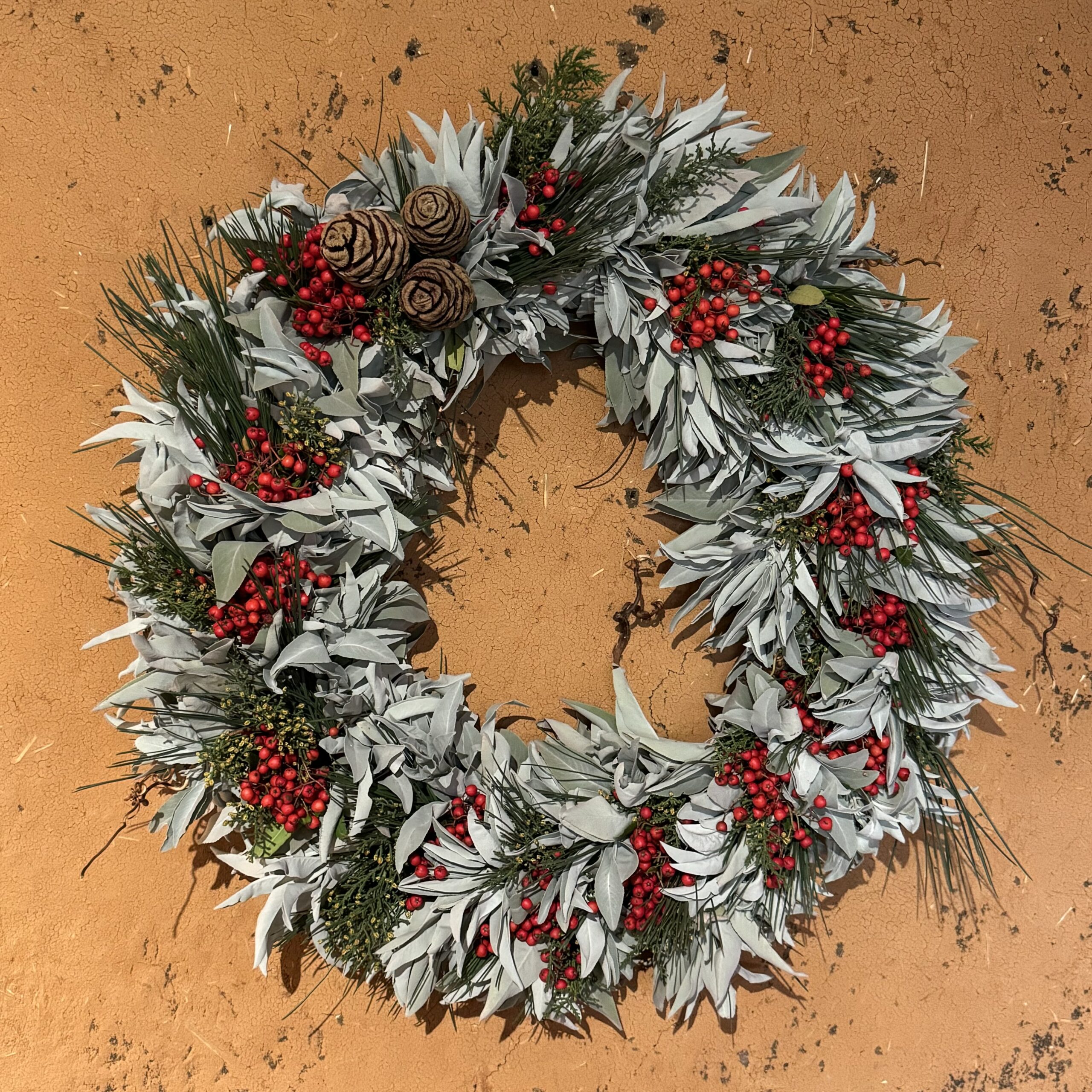
Merry Christmas wreaths 2023 by Hilda Evans.
Questions? Help is just one call or one email away. Call (949) 728-0685 or email (with pictures if you like) our special helpline: gardenhelp@californianativeplants.com